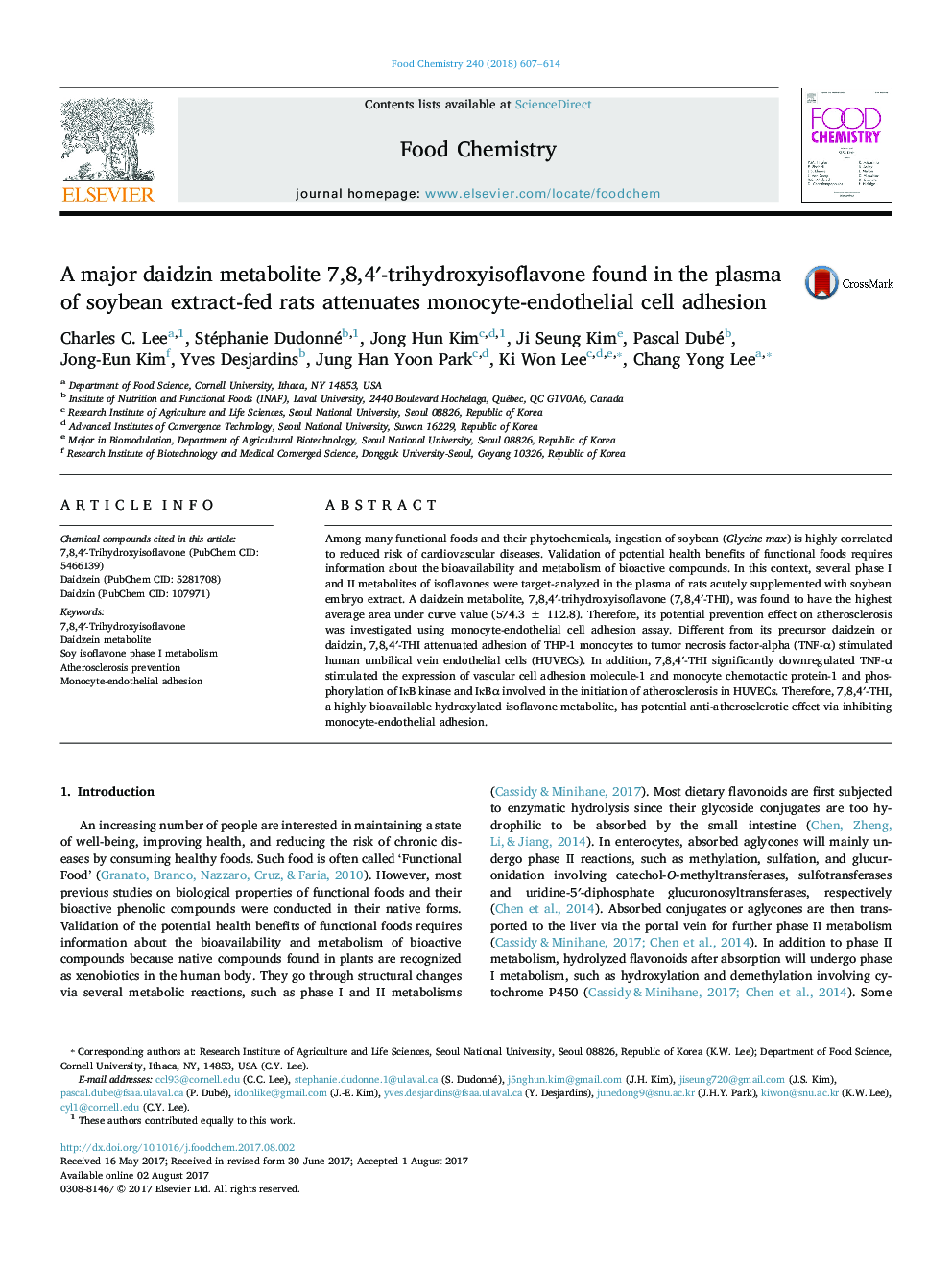| Article ID | Journal | Published Year | Pages | File Type |
|---|---|---|---|---|
| 5132500 | Food Chemistry | 2018 | 8 Pages |
â¢7,8,4â²-Trihydroxyisoflavone was found in the rat plasma after soybean intake.â¢The highest average AUC of 7,8,4â²-THI was 10 times higher than its precursor daidzein.â¢7,8,4â²-THI inhibited TNF-α stimulated monocyte-endothelial cell adhesion.
Among many functional foods and their phytochemicals, ingestion of soybean (Glycine max) is highly correlated to reduced risk of cardiovascular diseases. Validation of potential health benefits of functional foods requires information about the bioavailability and metabolism of bioactive compounds. In this context, several phase I and II metabolites of isoflavones were target-analyzed in the plasma of rats acutely supplemented with soybean embryo extract. A daidzein metabolite, 7,8,4â²-trihydroxyisoflavone (7,8,4â²-THI), was found to have the highest average area under curve value (574.3 ± 112.8). Therefore, its potential prevention effect on atherosclerosis was investigated using monocyte-endothelial cell adhesion assay. Different from its precursor daidzein or daidzin, 7,8,4â²-THI attenuated adhesion of THP-1 monocytes to tumor necrosis factor-alpha (TNF-α) stimulated human umbilical vein endothelial cells (HUVECs). In addition, 7,8,4â²-THI significantly downregulated TNF-α stimulated the expression of vascular cell adhesion molecule-1 and monocyte chemotactic protein-1 and phosphorylation of IκB kinase and IκBα involved in the initiation of atherosclerosis in HUVECs. Therefore, 7,8,4â²-THI, a highly bioavailable hydroxylated isoflavone metabolite, has potential anti-atherosclerotic effect via inhibiting monocyte-endothelial adhesion.
